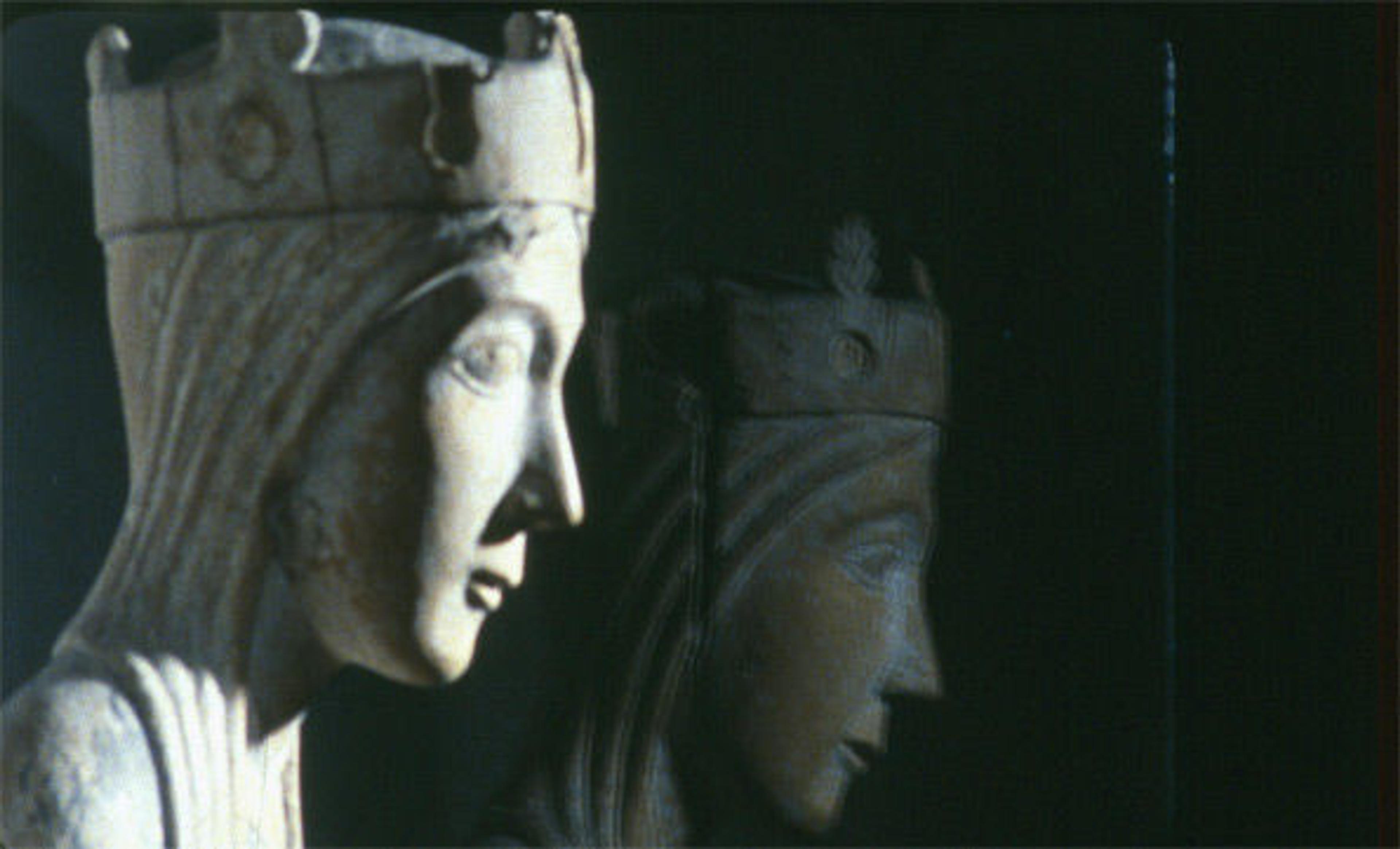«I would like for visitors to the exhibition Spies in the House of Art: Photography, Film, and Video to have a slightly "meta" experience—specifically, to see themselves standing in a museum looking at art about art in museums.» The artists whose works are in the show encourage this feeling, locating the creative act first and foremost in the act of looking—thinking with one's eyes. When the viewer starts to look this way, he or she may start to see how the art is presented, lit, and labeled from one perspective (one that is never the last word and that hopefully encourages the asking of more questions). The film Flash in the Metropolitan makes this point by lovingly detaching some of the Museum's objects from their supplemental and explanatory material, briefly allowing the works to roam free from their art historical cages.
Nashashibi/Skaer (British). Flash in the Metropolitan, 2006. Film; 16mm, color, silent, 3' 25". The Metropolitan Museum of Art, New York, Purchase, Vital Projects Fund Inc. Gift, through Joyce and Robert Menschel, 2010, (2010.403) © Nashashibi/Skaer
If a work of art can never be isolated from its context, neither can it be fully cloistered from the present, as Faulkner alludes in his famous line "The past is never dead. It's not even past." Around 1950, Joseph Cornell saw a mysterious portrait of a young man and then made a box sculpture that commemorated the feeling of the past coming alive in the present as a chance encounter with a Medici prince loitering in a modern penny arcade.
Joseph Cornell (American, 1903–1972). Penny Arcade Machine, 1950. Box construction; wood, glass, mirror, and printed paper. The Metropolitan Museum of Art, New York, The Muriel Kallis Steinberg Newman Collection, Gift of Muriel Kallis Newman, 2006 (2006.32.11)
In Blueprint for a Temple, Francesca Woodman imagines the tile patterns of New York tenement apartments as conduits to the kinds of sanctuaries offered to travelers in ancient times.
Francesca Woodman (American, 1958–1981). Blueprint for a Temple, 1980. Diazo collage. The Metropolitan Museum of Art, New York, Gift of George and Betty Woodman, 2001 (2001.737) © George and Betty Woodman
And Thomas Struth's photograph of restorers who seem to have magically stepped out from the paintings under their care makes the point that the oldest art is for nothing if not the needs of the present, a message that chimes perfectly with the Metropolitan's mission.
Thomas Struth (German, b. 1954). The Restorers at San Lorenzo Maggiore, Naples, 1988. Chromogenic print. The Metropolitan Museum of Art, New York, Purchase, Vital Projects Fund Inc. Gift, through Joyce and Robert Menschel; Alfred Stieglitz Society Gifts; Jennifer Saul Gift; Gift of Dr. Mortimer D. Sackler, Theresa Sackler and Family; and Gary and Sarah Wolkowitz Gift, 2010 (2010.121) © Thomas Struth
Over the next couple of months, members of the Met's Teen Advisory Group will respond to the themes of Spies in the House of Art. Make sure to check back and read about their favorite works of art in this exhibition and see the creativity they have inspired.
Related Links
Department of Photographs
Spies in the House of Art: Photography, Film, and Video
